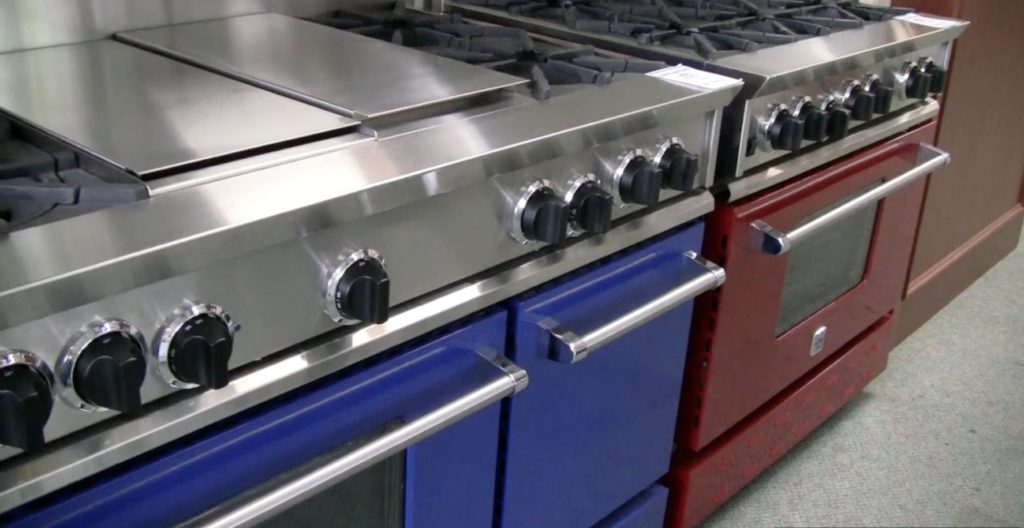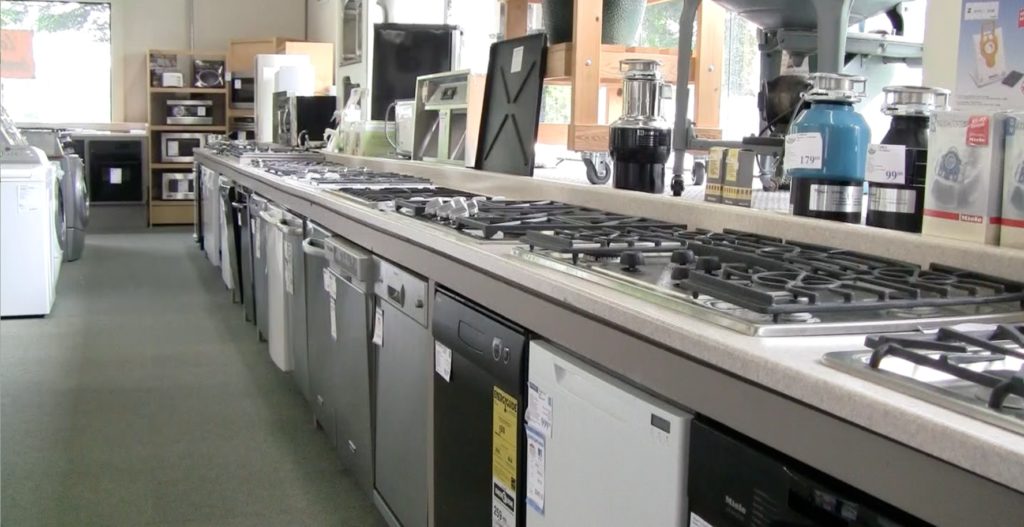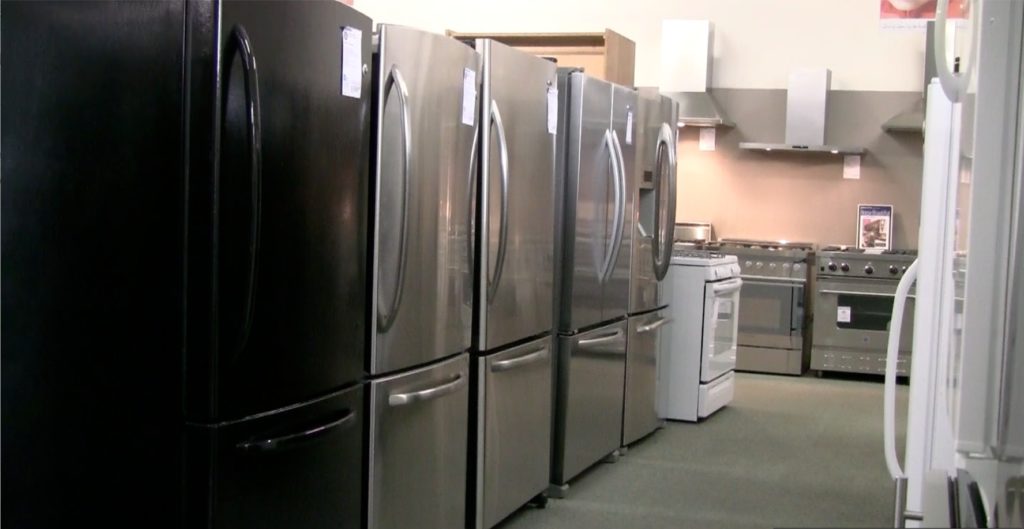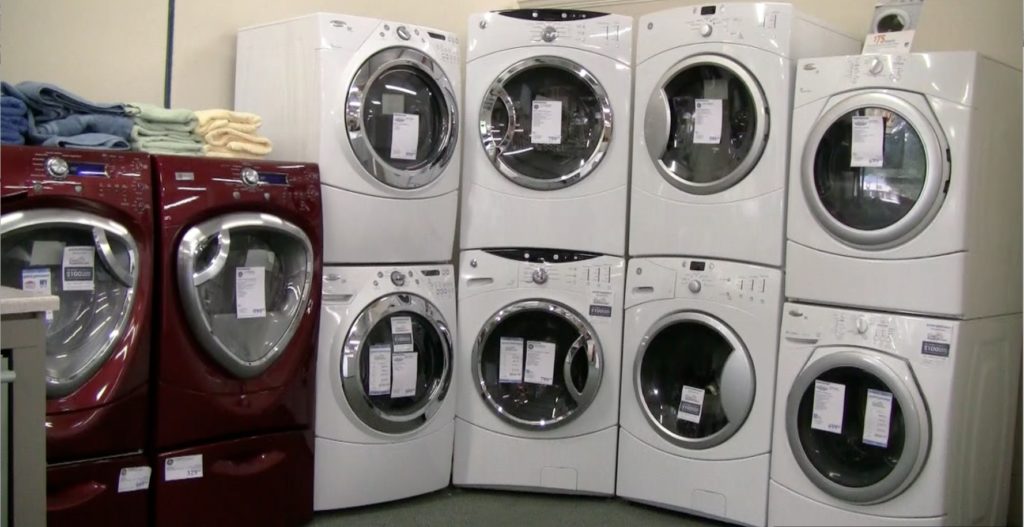
When choosing a home appliance, it’s important to know the full extent of your options. Photo: Asien’s Appliance, Inc. ©2018
With Dane Marcy of Kelly’s Appliance Center
Previously, we published an article featuring general tips for buying a home appliance. In this follow-up article, we’ll look at four major home appliances and list some specific considerations for choosing each.
1. Dishwashers
Rack design
Dishwasher manufacturers differ in their approaches to dish rack design and adjustability. While some take a one-size-fits-all approach to dish arrangement, others offer greater customizability with features like adjustable tines and removable compartments. Before making a choice, take a look inside and consider your specific needs.
Noise level
Dishwashers vary in terms of operating noise level, so be sure to take this into account when choosing one. If your kitchen is located next to your living room, you’ll want a quiet model that won’t compete with your TV or disturb the general tranquility.
Drying system
Today’s dishwashers utilize two different systems to dry dishes: heated dry and condensation dry. The latter system (specific to high-end models) requires the dishwasher to have a stainless steel tub and culminates with a hot water rinse. Since steel cools much faster than ceramic or glass, the tub’s walls naturally pull condensation away from the dishes, which causes them to dry. While this system doesn’t dry as thoroughly as the heated dry method, it’s far more energy-efficient, so you’ll need to decide what your priorities are.

Whether you’re buying a range or a dishwasher, be sure to ask about its specific features. Photo: Asien’s Appliance, Inc. ©2018
2. Ranges
Features
The biggest differentiators with today’s ranges are the specific features each offers. For example, many high-end ranges provide features like enhanced simmer control and increased BTU levels, both of which allow for more cooking precision. While such features may not be considered essential, they can make a big difference for culinary enthusiasts.
Gas vs. electric
Gas and electric ranges each have specific pros and cons in terms of aesthetics, performance, and cost. Gas ranges offer superior cooking control and cost less to operate due to their inexpensive fuel source. Meanwhile, electric ranges are generally less expensive to purchase and install, and they feature smooth, uniform cooktops that are nice to look at and easy to clean. In the end, your choice should depend on your personal preferences and priorities. Of course, you’ll also need to consider the type of power source that’s currently in your kitchen. If you have electric hook-ups, you’ll need to install a gas line to accommodate a gas-powered range, which will add a substantial expense to your budget.

When choosing a refrigerator, be sure to consider the potential functional impact of its design and door orientation. Photo: Asien’s Appliance, Inc. ©2018
3. Refrigerators
Design
Refrigerators come in a few different design styles:
- French door (two-door refrigerator with freezer below)
- Side-by-side freezer/refrigerator
- Single-door with freezer above or below
Keep in mind that a refrigerator’s design can impact its functionality. For example, the French door style is very popular due to its generous storage capacity, but this design is known for having issues with its icemaker. With other refrigerator designs, the icemaker is located in the freezer—a natural placement. However, since a French door model’s freezer is at the bottom, having an icemaker in the door requires a separate freezer compartment to be installed. This additional freezer element doubles the chances for freezer-related issues to occur; in fact, icemaker issues are the number one thing that can go wrong with this style of refrigerator. Be sure to consider this when making your choice and do some research to find out which brands are most susceptible to such issues.
Cooling system
Today’s refrigerators utilize two types of cooling systems: single-evaporator and dual-evaporator. With a single-evaporator system, the cooling element is housed in the freezer and responsible for cooling both the freezer and refrigerator. With a dual-evaporator, the refrigerator and freezer have separate cooling elements. This allows for higher humidity levels in the refrigerator, which helps keep produce and other perishables fresher for longer. If your diet consists largely of fresh fruits and vegetables, a dual-evaporator refrigerator can save you a lot of money on groceries by preventing food waste.
Aesthetics
If you’re redesigning your kitchen, you may want to look into getting a built-in or counter-depth refrigerator that conforms to your kitchen’s layout. This is a little more expensive and you may end up with less storage capacity, but it can be worthwhile if aesthetics are a high priority for you.

An important consideration when choosing a washing machine is whether to go with a top-load or front-load model. Photo: Asien’s Appliance, Inc. ©2018
4. Washing Machines
Features
As with ranges, today’s washing machines come with a wide array of functional features that allow for more customized usage. While basic models are still available to those who prefer simplicity, the more advanced models boast versatile cycle options, custom temperature control and soil level settings, and special features such as steam wash and automatic detergent dispersal. Whether you have a lot of fine/delicate clothing or a lifestyle that involves getting dirty on a regular basis, look for a washer with the capabilities to meet your specific cleaning needs.
Front-load vs. top-load
Over time, front-load washing machines have gradually surpassed top-load washers as the most popular style. This is primarily due to their superior design, which allows for reduced water consumption, improved accessibility and space savings from vertical washer/dryer stacking. Additionally, front-load washers provide a more thorough cleaning, thanks to the natural agitation created as the spinning clothes constantly fall upon each other. Top-load washers, on the other hand, rely on an agitator plate to simulate agitation—an auxiliary measure that doesn’t quite measure up to a front-loader’s inherent cleaning ability.
If you’re switching from a top-load washer to a front-load model, there are a couple of things you’ll need to keep in mind. First, a front-load washer’s orientation makes it more susceptible to mildew issues. To combat this, make a habit of leaving the washer door open and periodically run a rinse cycle with a mildewcide tablet. Second, front-load washers require less detergent. Since using too much detergent can cause functionality problems with a washer, you’ll need to adjust your habits accordingly.
Read our related article on buying a home appliance.
